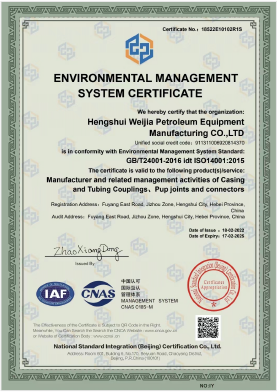- Afrikaans
- Albanian
- Amharic
- Arabic
- Armenian
- Azerbaijani
- Basque
- Belarusian
- Bengali
- Bosnian
- Bulgarian
- Catalan
- Cebuano
- Corsican
- Croatian
- Czech
- Danish
- Dutch
- English
- Esperanto
- Estonian
- Finnish
- French
- Frisian
- Galician
- Georgian
- German
- Greek
- Gujarati
- Haitian Creole
- hausa
- hawaiian
- Hebrew
- Hindi
- Miao
- Hungarian
- Icelandic
- igbo
- Indonesian
- irish
- Italian
- Japanese
- Javanese
- Kannada
- kazakh
- Khmer
- Rwandese
- Korean
- Kurdish
- Kyrgyz
- Lao
- Latin
- Latvian
- Lithuanian
- Luxembourgish
- Macedonian
- Malgashi
- Malay
- Malayalam
- Maltese
- Maori
- Marathi
- Mongolian
- Myanmar
- Nepali
- Norwegian
- Norwegian
- Occitan
- Pashto
- Persian
- Polish
- Portuguese
- Punjabi
- Romanian
- Russian
- Samoan
- Scottish Gaelic
- Serbian
- Sesotho
- Shona
- Sindhi
- Sinhala
- Slovak
- Slovenian
- Somali
- Spanish
- Sundanese
- Swahili
- Swedish
- Tagalog
- Tajik
- Tamil
- Tatar
- Telugu
- Thai
- Turkish
- Turkmen
- Ukrainian
- Urdu
- Uighur
- Uzbek
- Vietnamese
- Welsh
- Bantu
- Yiddish
- Yoruba
- Zulu
Optimizing Tubing Coupling Techniques for Enhanced Performance and Reliability
Understanding Coupling for Tubing A Comprehensive Overview
In the oil and gas industry, the integrity and efficiency of operations heavily rely on the appropriate selection and use of various components, one of the most critical being tubing coupling. Tubing is a crucial element in the production and transportation of hydrocarbons from underground reservoirs to the surface. Couplings play an essential role in connecting sections of tubing, ensuring that the system operates smoothly and effectively. This article delves into the importance, types, and considerations of tubing couplings.
Importance of Tubing Couplings
Couplings are mechanical devices designed to join two pieces of tubing securely. They provide a means to enhance the structural integrity of the entire tubing system while allowing for some flexibility in operation. The right coupling minimizes the risk of leaks, which can lead to significant financial losses and environmental hazards. Given the high pressures and extreme conditions often associated with oil and gas extraction, selecting the correct coupling type is vital for operational safety and efficiency.
Types of Tubing Couplings
There are several types of couplings used in tubing systems, each tailored for specific applications and conditions. The most common types include
1. Threaded Couplings These are widely used due to their simplicity and versatility. They feature male and female threads, providing a secure connection that is relatively easy to manipulate. However, care must be taken to ensure proper alignment during assembly to avoid cross-threading and leaks.
coupling for tubing

2. Welded Couplings These are often preferred for high-pressure applications. Welding the coupling to the tubing ensures a robust joint, capable of withstanding extreme conditions. However, the welding process requires skill and can be time-consuming.
3. Flanged Couplings Utilizing a flange connection allows for easy disassembly and maintenance. Flanged couplings are particularly useful in systems where frequent inspection and maintenance are required. However, they may not be suitable for every underground application due to their bulkiness.
4. Compression Couplings This type of coupling uses a compression mechanism to secure the tubing, making it straightforward to install and remove. Compression couplings are gaining popularity in many applications due to their ease of use and reliability.
Considerations in Selecting Tubing Couplings
When selecting a tubing coupling, various factors must be taken into account. Firstly, the operating pressure and temperature of the system should guide the material choice—common materials include steel, aluminum, and various alloys designed to endure harsh conditions. Secondly, compatibility with existing tubing should also be considered. Finally, regulatory compliance and safety standards must be adhered to, particularly in regions with stringent environmental regulations.
Conclusion
Couplings for tubing are more than mere connectors; they are vital to ensuring the efficiency, safety, and reliability of tubing systems in oil and gas applications. By understanding the different types of couplings available and the specific requirements of their applications, professionals can make informed decisions that promote operational success. The choice of coupling ultimately impacts not just the immediate project at hand, but also the long-term sustainability and safety of the environment in which these operations take place.
-
Tubing Pup Joints: Essential Components for Oil and Gas OperationsNewsJul.10,2025
-
Pup Joints: Essential Components for Reliable Drilling OperationsNewsJul.10,2025
-
Pipe Couplings: Connecting Your World EfficientlyNewsJul.10,2025
-
Mastering Oilfield Operations with Quality Tubing and CasingNewsJul.10,2025
-
High-Quality Casing Couplings for Every NeedNewsJul.10,2025
-
Boost Your Drilling Efficiency with Premium Crossover Tools & Seating NipplesNewsJul.10,2025







